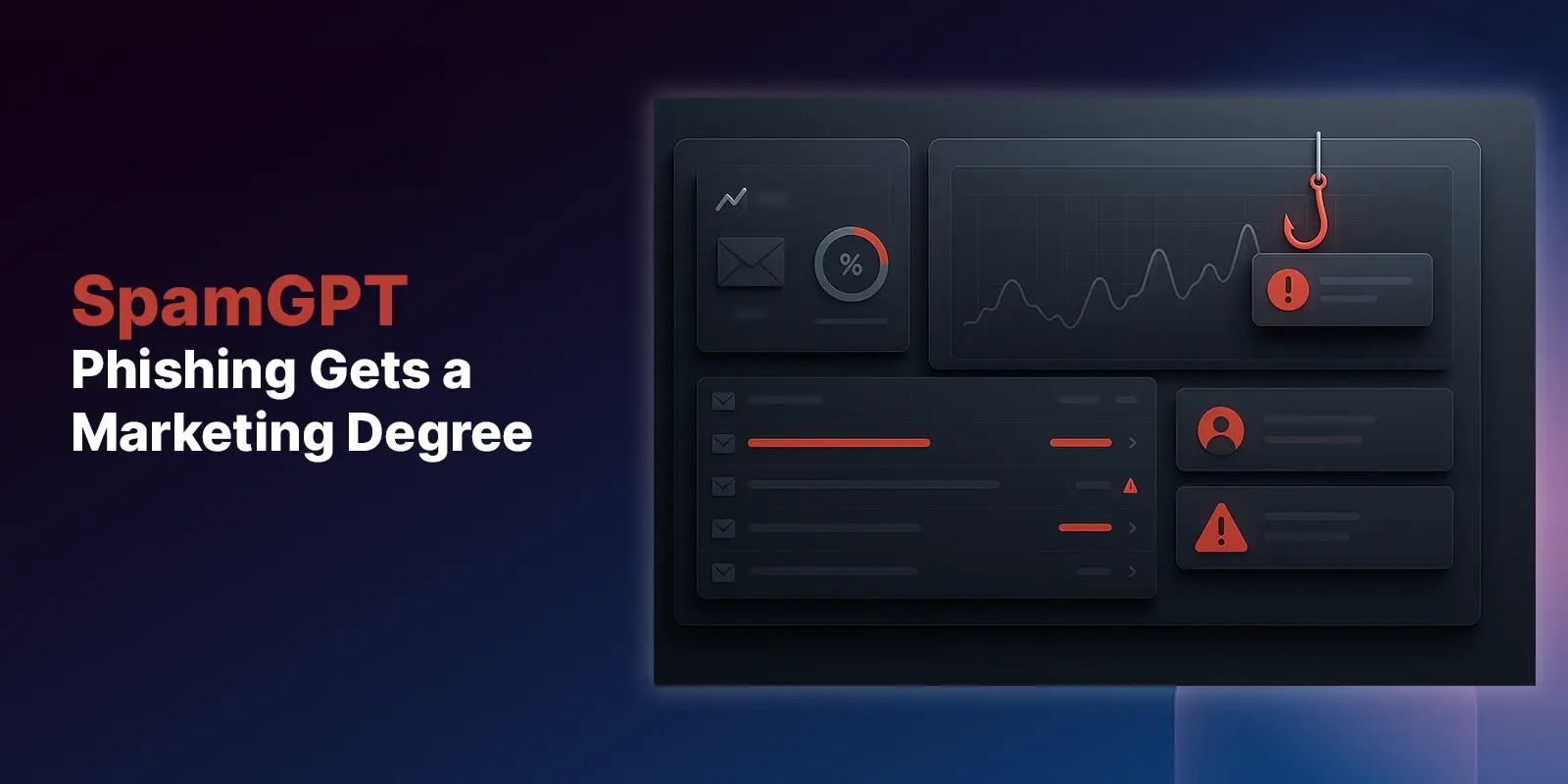Table of Contents
Business Email Compromise (BEC) attacks are a growing threat, posing significant financial risks to businesses. These sophisticated attacks target key individuals, leading to significant financial losses and reputational damage. The Osterman Research white paper, "Defending the Enterprise: The Latest Trends and Tactics in BEC Attacks," found that BEC attacks cost $2.7 billion in the United States in 2022, with an average loss of $125,611 per incident.
Taking proactive steps is crucial to reducing the impact of BEC attacks and protecting your business. This blog will explore the financial impact of BEC attacks and provide effective protection strategies.
Understanding BEC Attacks
According to the Osterman Research white paper, Business Email Compromise (BEC) is a severe and growing threat, with large organizations expecting a 43.3% increase in BEC attacks over the next year. BEC involves attackers gaining access to a business email account and imitating the owner's identity to defraud the company, its employees, customers, or partners. These attacks are highly targeted and meticulously planned, making them particularly dangerous.
Types of BEC Attacks
The Osterman Research white paper reveals that the threat of BEC attacks is escalating. BEC is now considered twice as problematic as general phishing attacks, highlighting the urgent need for businesses to bolster their defenses against these sophisticated threats.
BEC attacks can take various forms, but the most common types are:
- Fake Invoices: Attackers submit fraudulent invoices or change payment details on legitimate invoices to redirect funds to their accounts.
- Data Theft: Cybercriminals use compromised email accounts to request sensitive data, leading to significant data breaches.
- Account Takeover: Attackers gain control of an email account to access company information or further their attack.
The Financial Impact of BEC Attacks
Real-World Examples
BEC attacks are among the most costly cybercrimes reported to the FBI. In 2020, 19,369 complaints of BEC schemes resulted in $1.8 billion in losses, with the average cost per incident being $92,932. By 2021, the number of complaints remained stable, but the cost increased to $2.4 billion, averaging $120,276 per incident. The trend continued in 2022, with the number of complaints and losses rising further.
The Cost of Ignoring BEC Threats
Failing to detect and mitigate BEC attacks can lead to massive financial consequences. Businesses face direct monetary losses from fraudulent transactions, costs associated with data breaches, and potential regulatory fines. Additionally, there are indirect costs such as reputational damage, loss of customer trust, and the operational disruption caused by these attacks.
Recognizing the financial repercussions of Business Email Compromise (BEC) attacks enables organizations to fully grasp the necessity of deploying robust security solutions to protect their business and uphold their reputation.
Targeted Individuals and Vulnerabilities
High-Risk Roles
BEC attacks often target key individuals within an organization. The Osterman Research white paper highlights that finance employees and C-level executives are the most frequent targets. These roles are vulnerable because they handle financial transactions and have the authority to approve payments.
Common Attack Vectors
Attackers use several methods to exploit these high-risk roles, including:
- Phishing Emails: Deceptive emails that trick recipients into revealing sensitive information or performing unauthorized actions.
- Social Engineering: Manipulating victims into sharing confidential information through psychological tactics.
- Spoofed Emails: Emails that appear to come from trusted sources within the organization to gain access to sensitive information or authorize fraudulent transactions.
Impact on Organizations
A single successful BEC attack can lead to significant financial losses, data breaches, and operational disruptions. Due to their targeted nature and the involvement of trusted individuals, detecting and mitigating these attacks is challenging.
Understanding who is at risk and how attacks occur is essential for developing effective defenses against BEC threats.
Ineffectiveness of Traditional Security Measures
Many businesses rely on traditional security measures to protect against BEC attacks. These include secure email gateways (SEGs), multi-factor authentication (MFA), and security awareness training.
However, the Osterman Research white paper points out that these measures often fail to address the sophisticated nature of BEC attacks.
- Secure Email Gateways (SEGs): SEGs are designed to block malicious links and attachments, but BEC emails typically don't include these characteristics, making them difficult for SEGs to detect.
- Multi-Factor Authentication (MFA): MFA can prevent unauthorized access, but sophisticated phishing kits can now bypass MFA, reducing its effectiveness.
- Security Awareness Training: Training helps employees recognize phishing attempts, but it is often too infrequent and needs to be updated to address current threats effectively.
Gaps and Limitations
Traditional security measures have several shortcomings:
- Inadequate Detection: Many BEC attacks use social engineering tactics that do not involve malicious links or attachments, which traditional detection tools cannot handle.
- Outdated Training: Employee training programs are often not conducted regularly enough to keep up with the evolving tactics used by attackers.
- Over-reliance on Technology: Businesses often rely too heavily on technological solutions without adequately addressing the human factor, which is a critical component of BEC attacks.
The Osterman Research white paper emphasizes the need for a more comprehensive approach that combines advanced technology with regular, updated training to combat BEC attacks effectively.
Advanced Solutions for Mitigating BEC Attacks
AI-Powered Anti-Phishing Tools
Advanced technology, especially AI-powered anti-phishing tools, offers a robust defense against BEC attacks. According to the Osterman Research white paper, only 55% of organizations currently use AI tools, yet they are highly effective at detecting and mitigating BEC threats. These tools analyze communication patterns, language usage, and email behavior to identify malicious intent that traditional methods might miss.
- Adaptive AI: These systems constantly learn from new data to better detect and respond to changing BEC tactics.
- Behavioral Analysis: AI can flag anomalies that indicate potential BEC attacks by examining email behaviors and communication patterns.
- Human Insights: Combining AI with human insights ensures a comprehensive threat detection approach, leveraging machine efficiency and human intuition.
Benefits of AI-Powered Solutions
AI-powered solutions provide several advantages over traditional security measures:
- Improved Detection Rates: Adaptive AI can identify subtle signs of social engineering that other systems overlook by building and refining detailed social graphs of every employee.
- Automated Response: These tools can automatically respond to threats in real-time, reducing the window of opportunity for attackers.
- Customization and Flexibility: AI systems are tailored to an organization's specific users, needs, and behaviors--enhancing their effectiveness.
Implementation and Integration
Implementing AI-powered anti-phishing tools is straightforward and can be integrated with existing security infrastructures. Organizations should start by evaluating their security posture to assess measures and identify gaps where AI can provide additional protection—selecting the right tools that align with specific needs and threat landscapes. Training and awareness programs are also essential to ensure employees are prepared to recognize and respond to AI alerts and continue receiving regular updates on emerging threats.
The Osterman Research white paper underscores the importance of adopting advanced security measures, such as AI-powered tools, to combat the sophisticated nature of BEC attacks effectively.
Steps to Reduce Financial Impact
Proactive Monitoring and Detection
Proactive monitoring and early detection are crucial for minimizing the financial impact of BEC attacks. By continuously monitoring email traffic and communication patterns, organizations can identify potential threats before they escalate. The Osterman Research white paper emphasizes that integrating various technologies enhances protection against BEC attacks. Using adaptive AI-powered tools for real-time detection ensures even subtle signs of compromise are caught early.
Employee Training and Awareness
Regular, up-to-date training programs are vital for helping employees recognize and respond to BEC threats. The Osterman Research white paper highlights that many organizations do not regularly conduct training to keep up with evolving attacks. Effective security training should include realistic phishing simulations and teach employees to identify and report suspicious activities. Continuous education helps build a security awareness culture within the organization.
Incident Response Plan
A robust incident response plan is essential for mitigating damage from a BEC attack. This plan should outline clear steps for identifying, containing, and resolving threats, as well as communication protocols for informing stakeholders and regulatory bodies. Having a clear plan for incidents means you can act fast and effectively when an attack happens, cutting down on downtime and saving money.
By proactively monitoring threats, regularly training employees, and having a solid incident response plan, businesses can significantly reduce the financial impact of BEC attacks and protect their assets and reputations.
Download the Osterman Report, "Defending the Enterprise: The Latest Trends and Tactice in BEC Attacks," to learn about the impact of these advanced phishing threats.
Explore More Articles
Say goodbye to Phishing, BEC, and QR code attacks. Our Adaptive AI automatically learns and evolves to keep your employees safe from email attacks.

/Concentrix%20Case%20Study.webp?width=568&height=326&name=Concentrix%20Case%20Study.webp)













.webp?width=100&height=100&name=PXL_20220517_081122781%20(1).webp)

.png)
